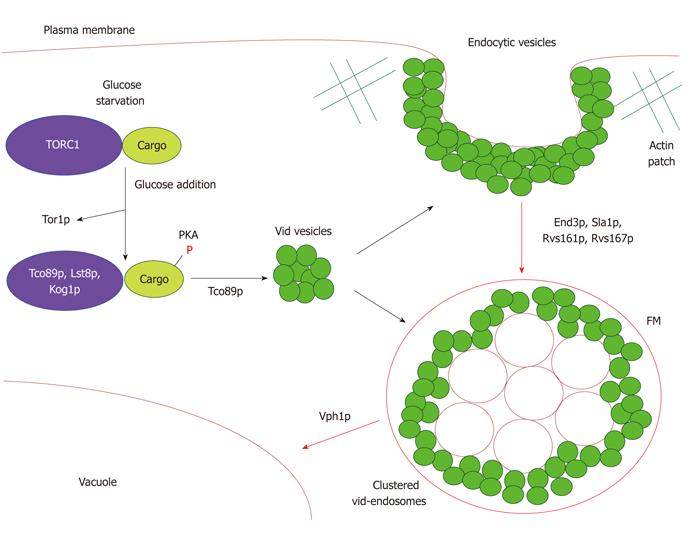Copyright
©2011 Baishideng Publishing Group Co.
World J Biol Chem. Nov 26, 2011; 2(11): 239-245
Published online Nov 26, 2011. doi: 10.4331/wjbc.v2.i11.239
Published online Nov 26, 2011. doi: 10.4331/wjbc.v2.i11.239
Figure 1 A model for the vacuole import and degradation pathway.
Gluconeogenic enzymes (cargo) targeted for degradation by the Vid pathway associate with the TORC1 complex during glucose starvation. Tor1p dissociates from this complex following glucose replenishment. Thereafter, the cargo proteins are phosphorylated by PKA. Tco89p mediates sequestration of the cargo proteins into free Vid vesicles and into Vid vesicles clustered around endocytic vesicles forming on the plasma membrane. Proteins involved in the later steps of actin polymerization, namely Rvs161p and Rvs167p, mediate scission of the endocytic vesicles and these are released into the cytoplasm as small endosomes. The Vid vesicles aggregate around these endosomes to form irregularly shaped structures. Vph1p is required for the transport of the Vid-endosome clusters to the vacuole.
- Citation: Alibhoy AA, Chiang HL. Vacuole import and degradation pathway: Insights into a specialized autophagy pathway. World J Biol Chem 2011; 2(11): 239-245
- URL: https://www.wjgnet.com/1949-8454/full/v2/i11/239.htm
- DOI: https://dx.doi.org/10.4331/wjbc.v2.i11.239









